Wrong posture during sleep, many hours of sitting at the desk, sedentary lifestyle – all this leads to constant back pain, which can be a symptom of a rapidly developing disease of the musculoskeletal system. Most people occasionally experience pain in the lower back or cervical spine.
In addition, the cause of pain may be a constant physical load on the back or poor posture. Under the influence of these factors, the spinal column is deformed, and the vertebrae experience too much pressure. To reduce this pressure and unload the spine, it is necessary to perform & nbsp; decompression exercises for back pain. As soon as you feel the slightest discomfort in the spine, do some exercises to reduce pain and pressure. For this, the decompression method of unloading the spine is considered effective.
What is spinal decompression
Decompression of the spine – it is a non-invasive approach to address the cause of back pain and other symptoms by relieving pressure on spinal tissues. Vertebral decompression consists in performing special stretching exercises for back pain.
Spine stretching relieves back pain and mobility problems by changing the angle between the vertebrae. At the same time, the spine is stretched, the vertebrae get rid of internal pressure, a so-called vacuum effect is created, which provides:
- increased blood circulation and nutrient intake;
- reduction of pinched nerve endings;
- acceleration of disk rehydration;
- pain relief.
Read also: Exercises to develop flexibility of the spine, Pilates for the spine - effective exercises for solving back problems
Read also: Unique Tibetan exercises for spinal health and flexibility
Decompression exercises for back pain
You can do the exercises on your own or with the help of a friend. Before doing any decompression exercises, you should consult your doctor about indications and contraindications. During the first workouts, do not load the spine too much, first determine your amplitude of deflections and twists.
Exercise #1
Stand straight, put your hands behind your back and place on the spine one on top of the other with the back side. Move your hands up the spine, reach the maximum point and fix the position by pressing on the post. Stretch back, straightening your back to & nbsp; vertebrae "clicked".
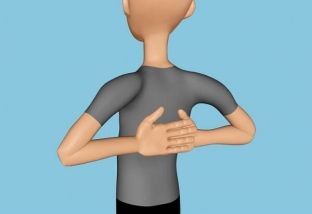
Exercise #2
To do this, you will need a chair with a small back. Sit on a chair and move to the edge, leaning on the back. Place your palms on your forehead, inhale deeply and exhale. The shoulders will begin to slide down the back of the chair as you exhale. In this way, a massage of the thoracic spine is performed.
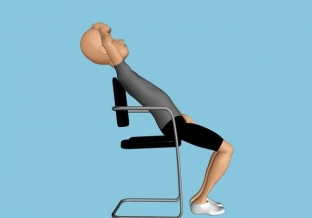
Exercise #3
Go to the corner of the wall and stand up straight, pressing your heels, buttocks, back and head against the corner. Extend your arms out to the sides, moving your shoulder blades together. Breathe evenly and deeply. You can stay in this position for 1 to 5 minutes. This position unloads the spine and relieves tension from the discs.
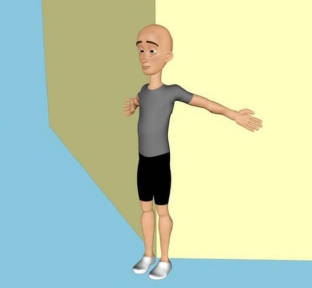
Spinal decompression with a ball
Exercise #1
To perform, you need to take a medicine ball. Sit on the ball and roll onto your back. The ball should be in the middle of the body. Relax, find a foothold with your feet. Start rolling back and forth on the ball, helping with your feet. The ball must move along the spine to stretch the disks.
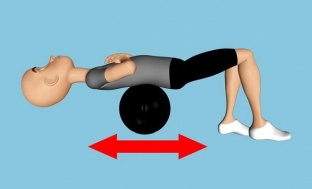
Exercise #2
Get on all fours in front of the ball. Roll the ball forward until your arms are straight. When the back and arms form a straight line, as you exhale, relax your back as much as possible and sag.
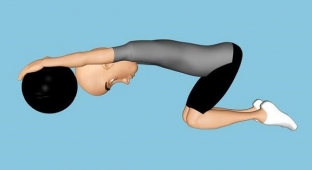
Exercise #3
Lie on the ball with your stomach and chest. Rest your toes on the floor, while your knees should not touch the surface. The arms hang freely, and the torso repeats the roundness of the ball. Let the vertebrae relax and rest.
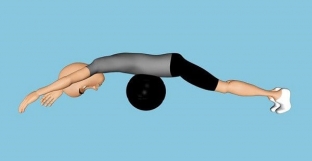
Spinal decompression exercises performed with a partner
Exercise #1
Lie on the floor and spread your arms to the sides, bending at the elbows. Turn your head in any convenient direction. The partner needs to place his hands on his back on both sides of the spine. You can start the movement from the thoracic region or from the lower back. The assistant should move his hands forward, pressing on the spine. You can not lean on the partner with all the weight of the body. The hands should move along your back with an onslaught so that you can feel a few “clicks”; vertebral discs.
Exercise #2
Pair work and this exercise requires a strong person who can lift you up. Cross your arms over your chest and stand straight, with your back to a friend. The partner grabs you by the elbows and lifts you, while bending back. Such therapy will help to achieve decompression of the vertebrae. After lifting, you will feel a few "clicks" discs that squeezed the nerve trunks and caused pain.
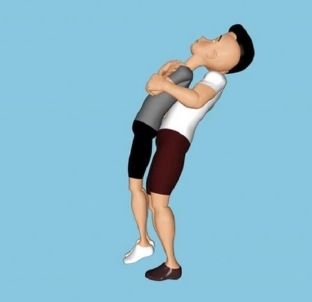
Other exercises for back pain
Exercise #1
Sit on the floor or mat with your legs extended. Bend the right leg at the knee and place the foot near the outer thigh of the left legs. The left leg is extended and straight. Place your left hand on the floor behind you with the palm of your hand. Bend your right arm at the elbow and rest it on your right knee. Pushing off the right hand knees, twist the spine to the right side. You should feel a click in the vertebra, then immediately relax and change position, twisting to the left side.
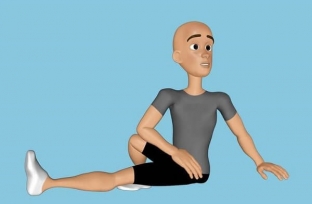
Exercise #2
Lie down on the bed with your shoulder blades hanging over the edge and straighten your arms. As you exhale, relax your back and allow your body to hang off the bed and your spine to straighten. When you feel that you are completely stretched, sit on the bed and bend down to your legs, changing the amplitude of the deflection of the spine. Do this several times for better stretching of the vertebrae.
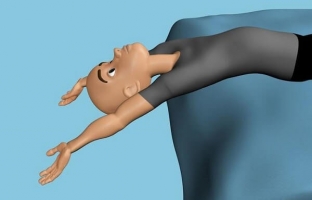
Exercise #3
Lie down on a mat, not on a hard surface, so that it doesn't hurt while doing the exercise. Bend your legs at the knees and press them to your chest, clasping your knees with your hands. Raise your head. Start rocking back and forth slowly. When you get comfortable with the rolls, increase the pace. As you move your back, you should feel every vertebrae.
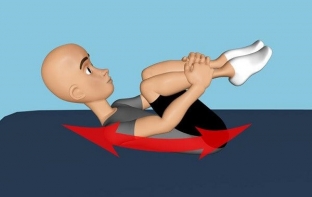
Attention! For severe back pain that does not go away after relaxing and returning to the starting position, stop exercising and consult a doctor.
Decompression exercises for back pain will help get rid of discomfort and keep the spine normal. In addition, watch your posture while walking and sitting on a chair and stool.
And if you're at work and there's no way to go to the gym, try these simple exercises:






Add a comment